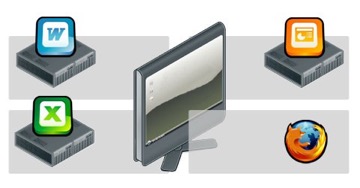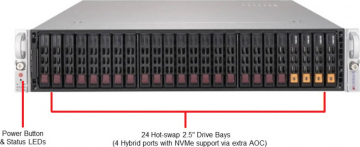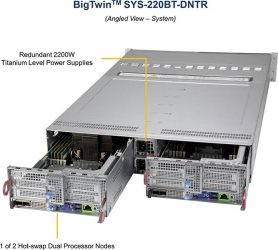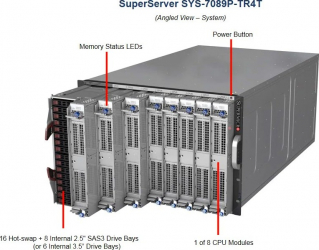Desktop Virtualization
In companies with a wide variety of desktop workstations, desktop virtualization is already widely used today. After all, where many employees work simultaneously on many individual desktop computers, it is essential to make sure that all these desktop computers are technically up to date, that important security updates are installed regularly, and that all components are maintained promptly.
With desktop virtualization, all these processes can be centralized and simplified considerably.

Here you'll find VDI - Desktop Virtualization
Do you need help?
Simply call us or use our inquiry form.
Desktop virtualization and its advantages
A Virtual Desktop Infrastructure (VDI) offers several advantages that many companies are already leveraged across all industries. At this point, we would like to give you a brief overview of the benefits of desktop virtualization:
- Easy administration from a central data centerMany companies operate their entire server and client infrastructure in a data center to achieve higher availability and flexibility. Software changes and updates can be easily made available company-wide while flexibly responding to new performance requirements.
- Easy provisioning of resources for all usersUsually, thin or zero clients are available to users who access the user VM via a remote client. The desktops or systems remain completely customizable and offer significantly higher performance than conventional desktop hardware.
- Cost-efficient operationBy consolidating all resources, maintenance and energy costs can be reduced effectively. The workstations provided to users are practically maintenance-free.
- Special IDs and permissions for different usersNot all users need all permissions - desktop virtualization gives each user a specific image of the operating system they can work with. This ensures that each employee has exactly the resources they need for their work.
Desktop virtualization: application virtualization for work on specific projects
Access via remote desktop is not always useful or welcome. External employees or employees who temporarily take over tasks often only need a special program. With application virtualization, you can provide just the resources your users need for their jobs.
With this type of virtualization, one or more applications are made available so that no separate installation is required on the user workstation. The application is integrated directly into the user desktop from the host via a remote client.

In contrast to desktop virtualization, this virtualization type requires fewer hardware resources as the host does not have to provide a complete desktop. Additional advantages are a better user experience when working simultaneously with local and remote apps and the security that no dependencies/conflicts can occur due to the isolated operation of the client system's applications.
Desktop virtualization and more: Efficient IT solutions from HAPPYWARE
You would like to learn more about different virtualization solutions? We are happy to assist you with our know-how. Contact us by phone or email, and we will gladly provide any information you need!












